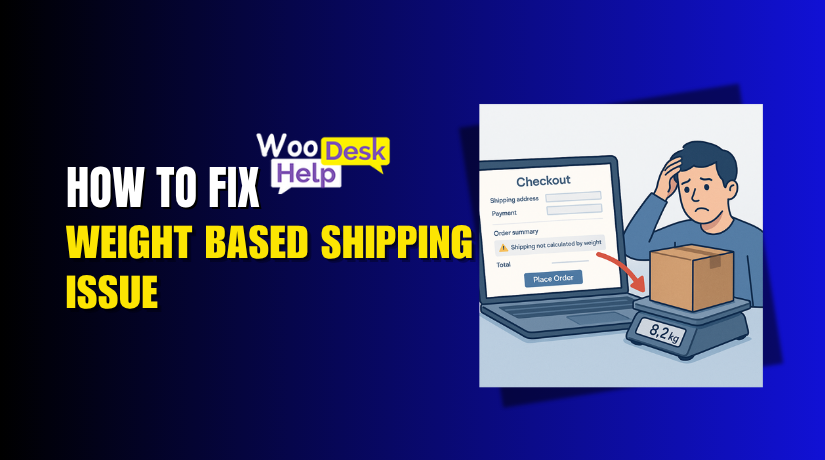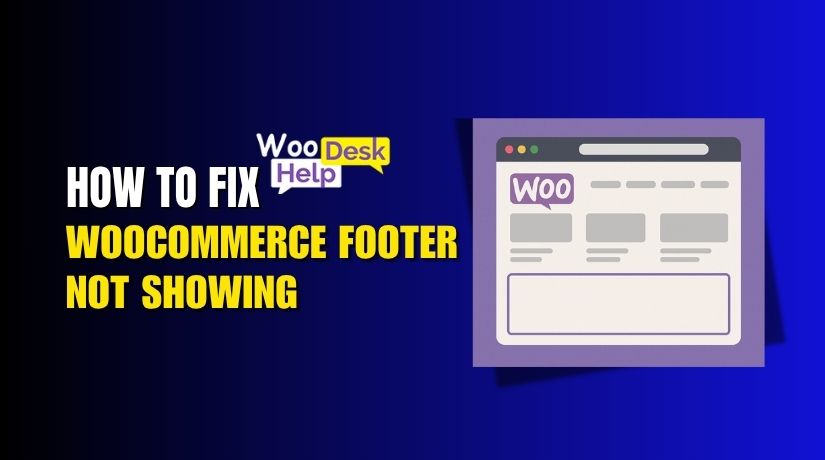
Fixing WooCommerce Payment Failed: Causes and Solutions
Table of Contents
- Introduction
- Why WooCommerce Payments Failed
- How to Identify the Root Cause of WooCommerce Payments Failed
- Diagnosing & Troubleshooting WooCommerce Payment Failed
- Handling Transactions That Fail But Charge Customers
- How to Handle Refunds for WooCommerce Payments Failed?
- Best WooCommerce Plugins to Improve Payment Processing
- Preventing Future WooCommerce Payment Failed
- Conclusion
Introduction
A smooth payment process is critical for any WooCommerce store. If customers face payment Failed, they may leave without completing the purchase. This leads to lost revenue and a poor shopping experience.
Many store owners struggle with payment errors in WooCommerce. These errors can be frustrating and hard to diagnose. Payments may fail due to technical issues, incorrect settings, or bank-related problems.
This guide will help you understand why payments fail in WooCommerce. You will also learn how to fix these issues and prevent them in the future.
Why WooCommerce Payments Failed
Payment Failedcan happen for several reasons. They may be due to issues with your store, the payment gateway, or the customer’s bank. Understanding these causes is the first step to fixing them.
- Technical Issues in WooCommerce
Technical problems can stop transactions from processing correctly. Some common technical reasons include:
- Server Downtime: If your website is down, payments cannot go through.
- Plugin Conflicts: Some plugins may interfere with the payment process.
- Outdated Software: An old version of WooCommerce may cause compatibility issues.
- JavaScript Errors: Checkout pages use scripts to process payments. Errors in these scripts can block transactions.
- Payment Gateway Problems
Your payment gateway plays a crucial role in processing transactions. If there are problems with the gateway, payments may not go through.
- Incorrect API Credentials: Wrong API keys can prevent payment processing.
- Gateway Downtime: Payment providers may experience temporary outages.
- Currency Mismatch: If your store currency does not match the gateway, payments may fail.
- Security Restrictions: Some gateways block transactions that seem risky.
- Customer-Related Payment Issues
Sometimes, the issue is not with your store but with the customer’s payment method. Some common reasons include:
- Insufficient Funds: The customer may not have enough money in their account.
- Card Details Entered Incorrectly: Mistyped card numbers, expiration dates, or CVV codes cause Failed.
- Bank Declined the Transaction: Some banks block online payments for security reasons.
- Expired Cards: A card past its expiry date cannot be used for payments.
- Security and Fraud Prevention Blocks
Many payment gateways use security measures to prevent fraud. While these features protect businesses, they can also block legitimate payments.
- Too Many Failed Attempts: If a customer enters the wrong card details multiple times, the system may block them.
- Suspicious Activity: If a purchase looks unusual, the bank may decline it.
- High-Risk Countries: Some payment gateways block transactions from certain locations.
How to Identify the Root Cause of WooCommerce Payments Failed
Fixing payment Failed starts with finding the exact issue. Here are some ways to diagnose the problem.
- Check the WooCommerce Order Status
Go to WooCommerce → Orders in your dashboard. Look at the payment status. Some common order statuses include:
- Pending Payment: The transaction did not complete.
- Failed: The payment gateway rejected the transaction.
- On Hold: The payment is waiting for manual approval.
- Canceled: The customer or system canceled the order.
Understanding these statuses can help you figure out what went wrong.
- Review the WooCommerce Error Logs
WooCommerce keeps logs of payment errors. To find them:
- Go to WooCommerce → Status.
- Click the Logs tab.
- Select the latest payment-related log from the dropdown.
Look for error messages that explain why the transaction failed.
- Test Payments with Different Methods
If one payment method fails, try another. For example:
- If a customer’s credit card is declined, try PayPal.
- If Stripe fails, test WooCommerce Payments instead.
This helps determine if the issue is with the payment gateway or the customer’s card.
- Check Your Payment Gateway Dashboard
Most payment providers have dashboards where you can check transaction status.
- Log into Stripe, PayPal, or your gateway provider’s account.
- Look for declined transactions and error messages.
- Check if the gateway is experiencing downtime.
Diagnosing & Troubleshooting WooCommerce Payment Failed
Payment Failedcan be frustrating for store owners and customers. If a payment does not go through, customers may abandon their cart. This leads to lost revenue and a bad user experience.
Diagnosing the issue is the first step in fixing it. This section provides a step-by-step guide to finding and solving payment problems.
Step 1: Check WooCommerce Order Status
The WooCommerce order status provides clues about failed payments. You can check this in your dashboard.
How to Check Order Status:
- Go to WooCommerce → Orders in your WordPress admin panel.
- Look at the status column next to each order.
Common Order Statuses & Their Meanings:
- Pending Payment: The transaction was not completed. The customer may have abandoned checkout.
- Failed: The payment gateway rejected the transaction.
- On Hold: The payment is waiting for manual approval.
- Canceled: The customer or system canceled the order.
If the order status is Failed, it means something went wrong with the transaction. Checking the error logs will provide more details.
Step 2: Review WooCommerce Error Logs
WooCommerce stores detailed logs of payment Failed. These logs contain error messages from payment gateways.
How to Access WooCommerce Logs:
- Go to WooCommerce → Status in your WordPress dashboard.
- Click the Logs tab.
- Select the latest log file related to payments.
What to Look for in Logs?
- Incorrect API credentials: The log may show an “invalid API key” error.
- Gateway connection issues: Errors like “timeout” indicate problems with the payment provider.
- Fraud detection blocks: Some transactions fail due to security restrictions.
Understanding these logs can help you fix the root cause.
Step 3: Test Payments with Different Methods
If one payment method fails, try another. This helps determine if the issue is with the gateway or the customer’s payment method.
How to Test Alternative Payment Methods:
- If a credit card fails, try a PayPal transaction.
- If Stripe payments fail, test WooCommerce Payments.
- Enable Cash on Delivery to check if the checkout process works.
If only one payment gateway fails, the issue is likely with the provider. If all payment methods fail, the issue is within WooCommerce.
Step 4: Debug Plugin Conflicts & API Issues
Plugins can sometimes interfere with payment processing. A conflict between WooCommerce and another plugin can cause errors.
How to Identify Plugin Conflicts:
- Disable all plugins except WooCommerce.
- Test a payment in sandbox mode.
- Re-enable plugins one by one to find the conflicting plugin.
Common Plugin Issues:
- Security plugins may block payment requests.
- Cache plugins can cause checkout Failed.
- Outdated payment gateway plugins may not work properly.
Keeping plugins updated reduces the risk of payment Failed.
Step 5: Optimize Payment Gateway Settings
Incorrect settings in your payment gateway can cause failed transactions.
Common Issues with Payment Gateways:
- Incorrect API keys prevent transactions from processing.
- Currency mismatch can lead to rejected payments.
- Webhook Failed stop transaction updates from reaching WooCommerce.
How to Fix Payment Gateway Settings:
- Verify API keys in WooCommerce payment settings.
- Check webhook URLs to ensure they are correct.
- Enable debugging mode in the payment gateway settings.
Testing in sandbox mode can help confirm if settings are correct.
Step 6: Ensure SSL & Security Compliance
An SSL certificate encrypts payment data for secure transactions. If SSL is not properly configured, payments may fail.
How to Check SSL Configuration:
- Open your website and look for “HTTPS” in the URL.
- Use the Why No Padlock tool to check for mixed content issues.
- Ensure your SSL certificate is active and valid.
Other Security-Related Issues:
- Some banks block payments from insecure websites.
- Firewalls may block transactions if not configured properly.
- Anti-fraud measures can trigger false declines.
Enabling 3D Secure authentication can help reduce fraud-related failures.
Handling Transactions That Fail But Charge Customers
Sometimes, a payment fails in WooCommerce, but the customer still gets charged. This can cause frustration and lead to refund requests or disputes.
When this happens, store owners must act fast. They need to identify the issue, process refunds, and prevent it from happening again.
This section explains why this issue occurs and how to fix it.
Why Does This Happen?
There are several reasons why a customer gets charged despite a failed transaction. These issues are usually linked to payment gateway delays, security checks, or bank policies.
- Payment Gateway Latency
- Some payment gateways take time to confirm transactions.
- If a delay occurs, WooCommerce may mark the payment as failed.
- The payment, however, might still go through later.
- Bank Authorization Holds
- Banks temporarily hold funds before confirming payments.
- If a transaction fails, the bank may still lock the amount.
- The funds usually return to the customer within a few days.
- API or Webhook Failed
- Webhooks send payment confirmations to WooCommerce.
- If a webhook fails, WooCommerce won’t update the payment status.
- The payment gateway might complete the charge, but WooCommerce marks it as failed.
- Fraud Prevention & Security Checks
- Some payment gateways flag suspicious transactions for review.
- While reviewing, the payment may appear as failed in WooCommerce.
- If the gateway later approves the transaction, the customer sees a charge.
How to Handle Refunds for WooCommerce Payments Failed
If a customer is wrongly charged, you need to process a refund quickly. This improves customer trust and avoids disputes.
Step 1: Verify the Transaction Status
- Check WooCommerce Orders → Look for “Failed” payments.
- Login to Payment Gateway Dashboard → Search for the transaction.
- Confirm if the charge was successful or pending.
Step 2: Contact the Payment Provider
- If you see a charge but no order confirmation, contact support.
- Ask the provider if the funds will auto-reverse or need manual action.
- Payment providers like Stripe and PayPal usually refund failed payments automatically.
Step 3: Manually Process a Refund in WooCommerce
- Go to WooCommerce → Orders.
- Click on the affected order.
- Scroll down and click Refund.
- Enter the refund amount and confirm.
Step 4: Inform the Customer
- Always update the customer via email or phone.
- Explain the issue and provide a refund confirmation.
- If the bank holds funds, advise the customer to wait 5–7 days.
Best WooCommerce Plugins to Improve Payment Processing
Using the right plugins can reduce payment Failed and improve checkout performance. WooCommerce has several plugins that help optimize payments, prevent fraud, and troubleshoot errors.
This section covers the best WooCommerce plugins to enhance payment processing.
- Payment Gateway Plugins (For Smooth Transactions)
A reliable payment gateway ensures secure and successful transactions. The right gateway reduces failed payments and improves checkout conversion rates.
🔹 WooCommerce Payments
- Developed by WooCommerce for seamless integration.
- Supports credit cards, debit cards, and digital wallets.
- Allows customers to pay in their local currency.
- Provides detailed transaction reports for easy tracking.
🔹 Stripe for WooCommerce
- One of the most trusted payment gateways worldwide.
- Supports Apple Pay, Google Pay, and credit/debit cards.
- Comes with built-in fraud detection.
- Ensures faster checkout with saved payment methods.
🔹 PayPal for WooCommerce
- Enables quick and secure payments via PayPal accounts.
- Supports guest checkout without requiring PayPal login.
- Works well with subscriptions and recurring payments.
- Reduces chargebacks with PayPal buyer protection.
- Security & Fraud Prevention Plugins
Fraud prevention tools help reduce chargebacks and block suspicious transactions. These plugins protect your store from unauthorized payments.
🔹 WooCommerce Anti-Fraud
- Scans transactions for high-risk or fraudulent activity.
- Flags suspicious orders before they are processed.
- Allows you to set fraud detection rules.
🔹 Wordfence Security
- Protects against malware and hacking attempts.
- Stops bots from abusing your checkout page.
- Provides a firewall to block suspicious traffic.
🔹 reCAPTCHA for WooCommerce
- Adds Google reCAPTCHA to checkout pages.
- Prevents fake transactions from bots.
- Reduces spam and fraudulent orders.
- Checkout Optimization Plugins
A well-optimized checkout process reduces payment Failed. These plugins help improve user experience and increase conversions.
🔹 CartFlows
- Creates custom checkout pages for higher conversions.
- Supports one-click upsells and order bumps.
- Helps reduce cart abandonment rates.
🔹 Checkout Field Editor
- Allows you to customize checkout fields.
- Removes unnecessary fields to speed up checkout.
- Helps simplify the payment process.
- Troubleshooting & Debugging Plugins
These plugins help identify and fix WooCommerce payment errors. They track issues and provide error logs for easier debugging.
🔹 Query Monitor
- Identifies slow database queries affecting payments.
- Detects plugin conflicts that cause transaction Failed.
- Helps debug WooCommerce and payment gateway errors.
🔹 WooCommerce Log Manager
- Stores detailed payment logs for troubleshooting.
- Helps analyze failed transactions.
- Useful for debugging payment gateway issues.
Preventing Future WooCommerce Payment Failed
Preventing payment fails is better than fixing them after they happen. A smooth checkout process helps boost conversions and keep customers happy.
This section covers proven strategies to prevent payment Failed in WooCommerce.
- Keep WooCommerce & Payment Plugins Updated
Outdated software can cause payment failures and security issues. Regular updates help fix bugs, improve compatibility, and enhance performance.
🔹 Why Updates Matter?
- Fixes bugs that may block transactions.
- Ensures compatibility with new WooCommerce versions.
- Improves security to prevent hacking attempts.
🔹 How to Keep WooCommerce Updated?
- Go to Dashboard → Updates and check for new versions.
- Update WooCommerce, payment gateways, and security plugins regularly.
- Test updates on a staging site before applying to the live store.
- Test Transactions in a Staging Environment
A staging site helps you test changes before going live. This prevents unexpected issues that may break payments.
🔹 How to Create a Staging Site?
- Use a plugin like WP Staging or BlogVault.
- Duplicate your website to a separate testing area.
- Run test transactions using different payment methods.
🔹 What to Test?
- Make sure payments are processed without errors.
- Check if order confirmations and invoices are generated correctly.
- Verify that refunds and chargebacks work as expected.
Testing helps you spot problems before customers experience them.
- Use Multiple Payment Gateways
Relying on one payment gateway increases the risk of failed transactions. Adding multiple gateways provides backup options for customers.
🔹 Benefits of Multiple Payment Gateways
- If one gateway is down, customers can use another method.
- Supports different customer preferences (credit cards, PayPal, bank transfers).
- Increases checkout flexibility and conversion rates.
🔹 Best Payment Gateways to Use
- Stripe – Fast, secure, and widely accepted.
- PayPal – Popular for online shoppers.
- Authorize.Net – Reliable for U.S.-based businesses.
- WooCommerce Payments – Built specifically for WooCommerce stores.
Offering more than one payment method reduces checkout abandonment.
- Optimize Checkout Page Performance
A slow or confusing checkout page causes customers to abandon their purchases.
🔹 How to Speed Up the Checkout Process?
- Remove unnecessary fields to make checkout faster.
- Enable guest checkout to avoid forced sign-ups.
- Use a one-page checkout layout for convenience.
- Test checkout speed using Google PageSpeed Insights.
🔹 Plugins to Improve Checkout Performance
- CartFlows – Optimizes checkout for faster payments.
- Checkout Field Editor – Lets you customize checkout fields.
- reCAPTCHA for WooCommerce – Reduces spam and fake orders.
A fast, simple checkout improves user experience and reduces payment Failed.
- Educate Customers on Payment Best Practices
Many payment fails happen due to customer mistakes. Educating them reduces errors and support requests.
🔹 What Customers Should Know?
- Double-check card details before submitting payment.
- Ensure the card has sufficient balance.
- Enable 3D Secure authentication if required by the bank.
- Contact their bank if a payment is declined.
🔹 How to Educate Customers?
- Add a FAQ section on your checkout page.
- Show an error message when payments fail with clear instructions.
- Offer live chat support for payment-related issues.
Providing clear guidance helps customers complete payments without frustration.
Conclusion
WooCommerce payment Failed can hurt sales and frustrate customers. Identifying the root cause is the first step to fixing them. Regular updates, proper payment gateway settings, and security checks help prevent issues. Using multiple payment methods gives customers more options. Optimizing the checkout process ensures a smooth transaction experience. Testing in a staging environment helps detect problems early. Educating customers reduces common payment mistakes. By following these steps, store owners can minimize payment failure. A seamless payment process boosts sales and improves customer satisfaction. Apply these strategies to keep your WooCommerce store running smoothly. 🚀
If you need further assistance with WooCommerce payment issues, feel free to contact WooHelpDesk for expert support.
📞 Phone: +1 888 602 0119 (US & Canada)
🌐 Website: woohelpdesk.com
Our team is ready to help you troubleshoot and optimize your WooCommerce store. 🚀





